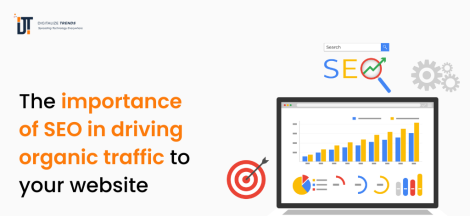Interior design SEO requires an experienced team of specialists, using proven strategies and processes that bring results. The top interior design SEO agencies utilize techniques that deliver on these promises.
Local interior design SEO is essential to firms wanting to rank well in local markets. This involves optimizing your website and setting up consistent NAP information across business listings and citations; additionally, this consists in writing blog posts to showcase expertise while driving leads.
Keyword Research
Attracting new architecture and design clients online is key, but without SEO you may as well remain invisible. Search engines rely on keywords and content ranking algorithms such as Google to rank websites; only those adhering to its rules while producing high-quality material will appear in search results.
Step one of creating an effective SEO strategy is identifying keywords that make sense for your business. Select keywords that reflect both your design style and the geographic area served. Ubersuggest or Keyword Tool are great tools for helping you do this; both offer suggestions of longtail keywords with lower competition that could benefit your SEO campaign.
Once you’ve compiled a list of relevant keywords, it’s time to optimize your website. Some effective on-page interior design SEO practices include using them in title tags and page titles, adding them to images, and weaving keywords into blog posts.
Also, ensure your site loads quickly and is mobile-friendly; having a slow website can have serious repercussions for SEO. Pingdom can help test site speed; alternatively, you could open a free Google AdWords account to view average monthly searches and the competitiveness of different keyword phrases.
On-Page Optimization
SEO is an intricate subject with many variables to consider. Some elements, like structured data and site speed, maybe more technical in nature; other considerations include keyword research, on-page optimization, and link building.
On-page optimization refers to those elements of your website that you can control, such as content and HTML source code. It involves writing effective title tags, using keywords correctly across pages and demonstrating expertise, authority, and trustworthiness; optimizing page architecture by making URLs search engine-friendly; using canonical tags where necessary, as well as marking non-significant pages with the “no index” meta tag to avoid duplicate content duplication; as well as eliminating duplicate pages by marking them with canonical meta tags or by including no index meta tags when applicable.
Title tags are one of the key components of an architecture and design firm’s on-page SEO strategy, playing a crucial role in click-through rates. Therefore, it’s crucial that they incorporate target keywords while accurately reflecting the content on each page. Furthermore, include these keywords within both H1> and H2> headers of your page for maximum impact.
Structured markup (or schema) is a way of adding additional information to your website’s HTML that helps search engines understand its content more fully. While not a direct ranking signal, the schema does help boost rankings by giving Google more data about you and your firm.
Link Building
Internet traffic can be fiercely competitive. To remain visible in search engine results pages, architecture, and design firms require a robust link-building strategy executed with assistance from an experienced digital marketing agency.
Link-building strategies can significantly boost the credibility of your website and draw qualified traffic from potential clients searching for services similar to what you offer. One effective way of marketing these services is through creating SEO-friendly content; having professional photographers and writers create engaging blog posts or articles on them can set them apart from the competition and bring in more traffic.
Interior designers may find authorship tags especially beneficial. Authorship tags allow designers to attach their name and photo alongside search engine listings of businesses and web pages for increased click-through rates and to create trust with potential clients before even seeing your company name.
Digital Shift knows exactly how to put and maintain your website at the top of search engine result pages (SERPs) year after year. White hat strategies don’t violate search engine policies and build high-quality backlinks relevant to your industry and industry-related. They drive more organic traffic from prospects in your local area because more relevant backlinks are established for your website.
Social Media
Social media marketing is one of the easiest and least costly ways for interior designers, architects, or construction companies to promote their business, engage customers, generate leads, and establish themselves as experts in their respective fields.
Your social media strategy should focus on building your brand and engaging your target audience. To do this, it’s essential that you understand what problems your clients are trying to address with various methodologies such as Jobs to Be Done or Persona analysis, so you can produce content that addresses those pain points while emphasizing the value of your services.
Interior design firms should use content to promote current projects, provide design tips and tutorials, or share industry insights on social media channels like Facebook, Instagram, Pinterest, and Twitter. Another option would be starting a blog or deco newsletter covering topics like texture trends, color palettes, and how to address common home design challenges.
TikTok is another effective way to reach your audience, providing visual content about your designs or even hosting an online quiz offering useful information in exchange for their email address.





 The Most Effective Ways To Enhance Security For Your Business
The Most Effective Ways To Enhance Security For Your Business